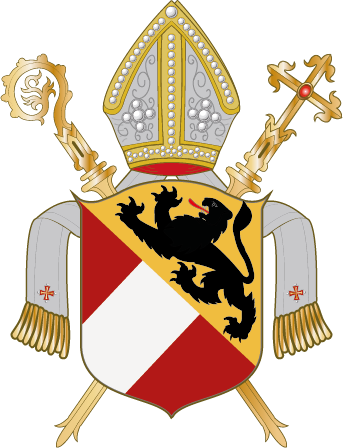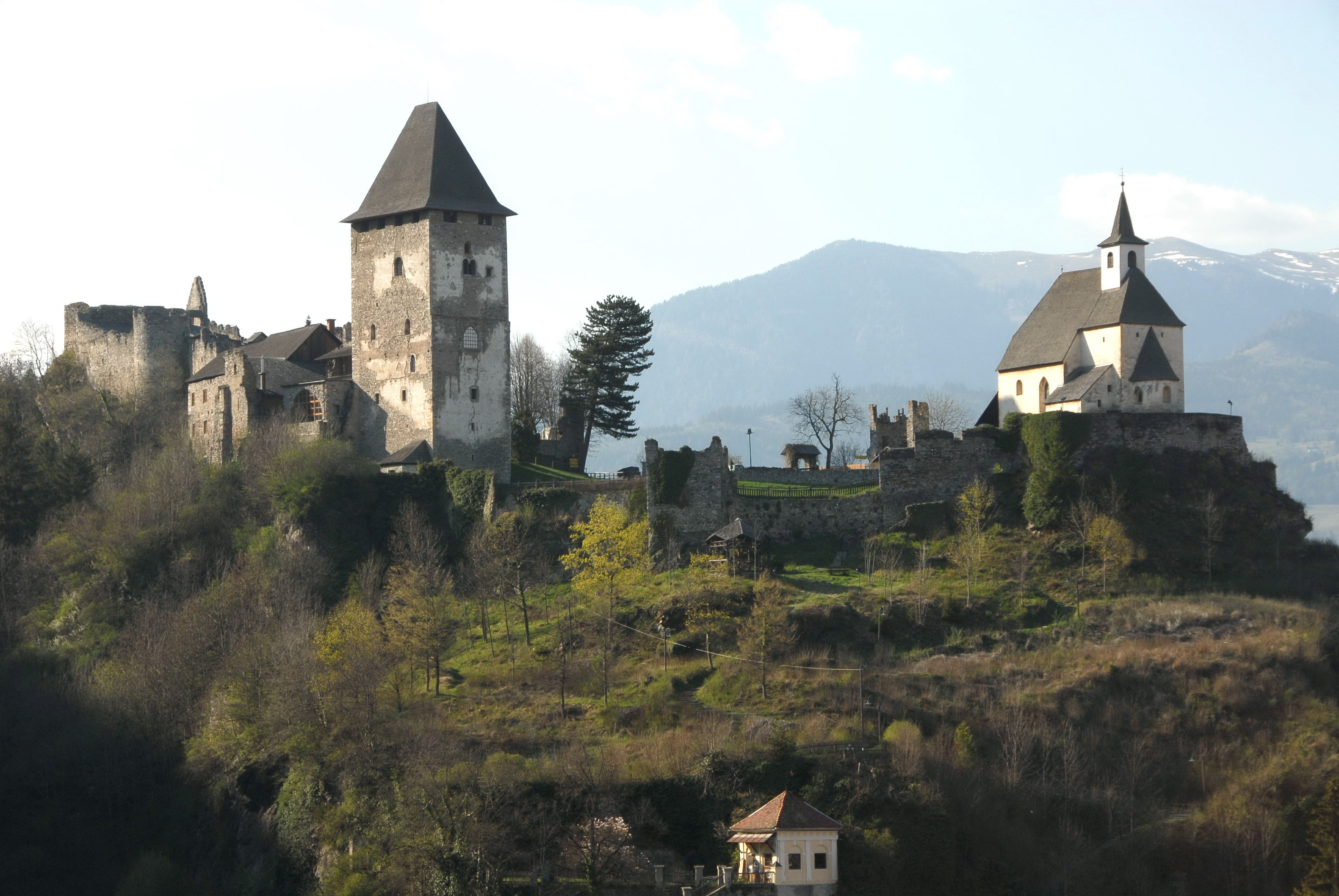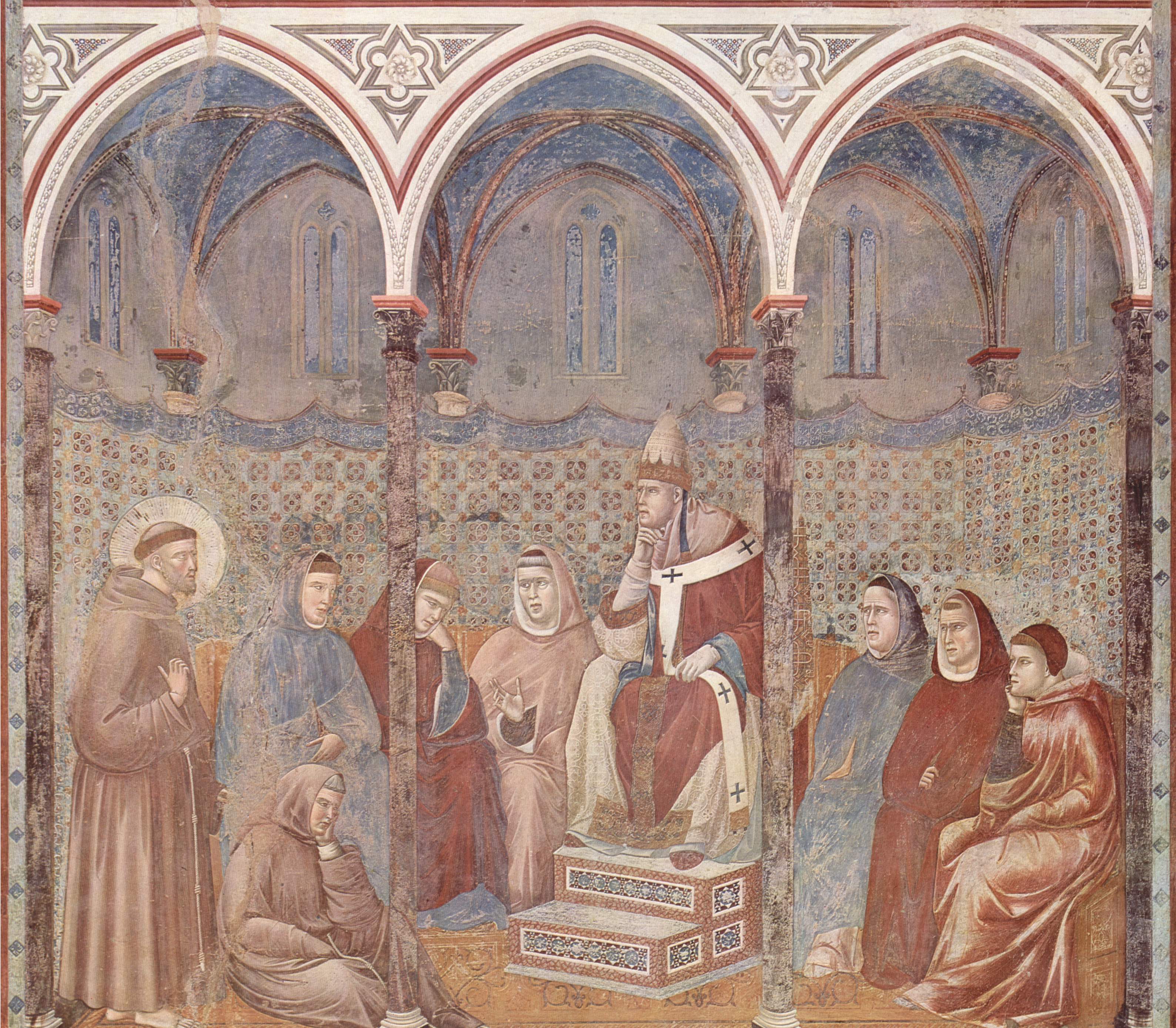|
Roman Catholic Diocese Of Lavant
The Diocese of Lavant (also Lavanttal, ) was a suffragan bishopric of the Archdiocese of Salzburg, established in 1228 in the Lavant Valley of Carinthia. In 1859 the episcopal see was re-assigned to Maribor (''Marburg an der Drau'') in present-day Slovenia, while the Carinthian parishes passed to the Diocese of Gurk. The diocese became the Diocese of Maribor (Marburg, in Slovenia), separated from the Salzburg ecclesiastical province, and became a suffragan of the Archbishop of Ljubljana on 5 March 1962. The Bishop of Maribor kept the additional title of Bishop of Lavant. On 7 April 2006 the Diocese of Maribor was elevated to an archdiocese. While the bishops of Lavant bore the title of prince-bishops (), this was purely honorary and they never became full-fledged prince-bishops with secular power over a self-ruling prince-bishopric (Hochstift), unlike the majority of the bishops in the Holy Roman Empire. They only exercised pastoral authority over their diocese like other ordi ... [...More Info...] [...Related Items...] OR: [Wikipedia] [Google] [Baidu] |
Suffragan Bishop
A suffragan bishop is a type of bishop in some Christian denominations. In the Catholic Church, a suffragan bishop leads a diocese within an ecclesiastical province other than the principal diocese, the metropolitan archdiocese; the diocese led by the suffragan is called a suffragan diocese. In the Anglican Communion, a suffragan bishop is a bishop who is subordinate to a metropolitan bishop or diocesan bishop (bishop ordinary) and so is not normally jurisdictional in their role. Suffragan bishops may be charged by a metropolitan to oversee a suffragan diocese and may be assigned to areas which do not have a cathedral. Catholic Church In the Catholic Church, a suffragan is a bishop who heads a diocese. His suffragan diocese, however, is part of a larger ecclesiastical province, nominally led by a metropolitan archbishop. The distinction between metropolitans and suffragans is of limited practical importance. Both are diocesan bishops possessing ordinary jurisdiction over thei ... [...More Info...] [...Related Items...] OR: [Wikipedia] [Google] [Baidu] |
Collegiate Chapter
In Christianity, a collegiate church is a church where the daily office of worship is maintained by a college (canon law), college of canon (priest), canons, a non-monastic or secular clergy, "secular" community of clergy, organised as a self-governing corporate body, headed by a dignitary bearing a title which may vary, such as Dean (religion), dean or Provost (religion), provost. In its governance and religious observance, a collegiate church is similar in some respects to a cathedral, but a collegiate church is not the seat of a bishop and has no Diocese, diocesan responsibilities. Collegiate churches have often been supported by endowments, including lands, or by tithe income from impropriation, appropriated benefices. The Church (building), church building commonly provides both distinct spaces for congregational worship and for the choir offices of the canons. History In the early medieval period, before the development of the parish system in Western Christianity, man ... [...More Info...] [...Related Items...] OR: [Wikipedia] [Google] [Baidu] |
House Of Habsburg
The House of Habsburg (; ), also known as the House of Austria, was one of the most powerful Dynasty, dynasties in the history of Europe and Western civilization. They were best known for their inbreeding and for ruling vast realms throughout Europe during the Middle Ages and early modern period, including the Holy Roman Empire and Habsburg Spain, Spain. The house takes its name from Habsburg Castle, a fortress built in the 1020s in present-day Switzerland by Radbot of Klettgau, who named his fortress Habsburg. His grandson Otto II, Count of Habsburg, Otto II was the first to take the fortress name as his own, adding "Count of Habsburg" to his title. In 1273, Count Radbot's seventh-generation descendant, Rudolph I of Germany, Rudolph, was elected King of the Romans. Taking advantage of the extinction of the Babenbergs and of his victory over Ottokar II of Bohemia at the Battle on the Marchfeld in 1278, he appointed his sons as Dukes of Austria and moved the family's power base ... [...More Info...] [...Related Items...] OR: [Wikipedia] [Google] [Baidu] |
Friesach
Friesach () is a historic town in the Sankt Veit an der Glan (district), Sankt Veit an der Glan district of Carinthia (state), Carinthia, Austria. First mentioned in an 860 deed, it is known as the oldest town in Carinthia. Geography Location Friesach covers an area of 120.83 km2 and its mean elevation is 631 meters above sea level. It is located in northern Carinthia near the border with Styria, about north of its capital Klagenfurt. Populated places The municipality of Friesach consists of the following cadastral community, cadastral communities (or ''katastralgemeinden''): Friesach, St. Salvator and Zeltschach; while further subdivided into 43 populated places (with population in brackets as of 1 January 2022). * Dobritsch (13) * Dörfl (13) * Engelsdorf (377) * Friesach (Breže) (1933) * Gaisberg (77) * Grafendorf (246) * Guldendorf (4) * Gundersdorf (5) * Gunzenberg (8) * Gwerz (51) * Harold (18) * Hartmannsdorf (11) * Hundsdorf (5) * Ingolsthal (90) * Judendor ... [...More Info...] [...Related Items...] OR: [Wikipedia] [Google] [Baidu] |
Vicedominus
Vidame () was a feudal title in France, a term descended from mediaeval Latin . Like the ''avoué'' or ''advocatus'', the ''vidame'' was originally a secular official chosen by the bishop of the diocese—with the consent of the count—to perform functions on behalf of the church's earthly interest that were religiously inappropriate; this especially included violence, even in the service of justice, and to act as protector. Unlike the ''advocatus'', however, the ''vice- dominus'' was at the outset an ecclesiastical official, who acted as the bishop's lieutenant (''locum tenens'') or vicar. But the causes that changed the character of the ''advocatus'' operated also in the case of the ''vidame''. The title of Vidame de Chartres is much the best known, having been held by several people distinguished in various fields and known by the title. Although a vidame was in theory a relatively low-ranking title, in practice under the French medieval system it gained in prestige and ... [...More Info...] [...Related Items...] OR: [Wikipedia] [Google] [Baidu] |
Vicar-general
A vicar general (previously, archdeacon) is the principal deputy of the bishop or archbishop of a diocese or an archdiocese for the exercise of administrative authority and possesses the title of local ordinary. As vicar of the bishop, the vicar general exercises the bishop's ordinary executive power over the entire diocese and, thus, is the highest official in a diocese or other particular church after the diocesan bishop or his equivalent in canon law. The title normally occurs only in Western Christian churches, such as the Latin Church of the Catholic Church and the Anglican Communion. Among the Eastern churches, the Mar Thoma Syrian Church of Kerala uses this title and remains an exception. The title for the equivalent officer in the Eastern churches is syncellus and protosyncellus. The term is used by many religious orders of men in a similar manner, designating the authority in the Order after its Superior General. Ecclesiastical structure In the Roman Catholic Ch ... [...More Info...] [...Related Items...] OR: [Wikipedia] [Google] [Baidu] |
Styria
Styria ( ; ; ; ) is an Austrian Federal states of Austria, state in the southeast of the country. With an area of approximately , Styria is Austria's second largest state, after Lower Austria. It is bordered to the south by Slovenia, and clockwise, from the southwest, by the other Austrian states of Carinthia, Salzburg (federal state), Salzburg, Upper Austria, Lower Austria, and Burgenland. The state's capital is Graz, the second largest city in Austria after only Vienna. Name The March of Styria derived its name from the original seat of its ruling Otakars, Otakar dynasty: Steyr, in today's Upper Austria, which in turn derives its name from the namesake river of Steyr, stemming from the Celtic Stiria. In the native German the area is still called "Steiermark", while in English the Latin name "Styria" is used. Until the late 19th century however, the German name "Steyer", a slightly modernized spelling of Steyr, was also common. The ancient link between the city of Steyr and S ... [...More Info...] [...Related Items...] OR: [Wikipedia] [Google] [Baidu] |
Austria Dioecesis 13saec
Austria, formally the Republic of Austria, is a landlocked country in Central Europe, lying in the Eastern Alps. It is a federation of nine Federal states of Austria, states, of which the capital Vienna is the List of largest cities in Austria, most populous city and state. Austria is bordered by Germany to the northwest, the Czech Republic to the north, Slovakia to the northeast, Hungary to the east, Slovenia and Italy to the south, and Switzerland and Liechtenstein to the west. The country occupies an area of and has Austrians, a population of around 9 million. The area of today's Austria has been inhabited since at least the Paleolithic, Paleolithic period. Around 400 BC, it was inhabited by the Celts and then annexed by the Roman Empire, Romans in the late 1st century BC. Christianization in the region began in the 4th and 5th centuries, during the late Western Roman Empire, Roman period, followed by the arrival of numerous Germanic tribes during the Migration Period. A ... [...More Info...] [...Related Items...] OR: [Wikipedia] [Google] [Baidu] |
Duchy Of Styria
The Duchy of Styria (; ; ) was a duchy located in modern-day southern Austria and northern Slovenia. It was a part of the Holy Roman Empire until its dissolution in 1806 and a Cisleithanian crown land of Austria-Hungary until its dissolution in 1918. History It was created by Emperor Frederick Barbarossa in 1180 when he raised the March of Styria to a duchy of equal rank with neighbouring Carinthia and Bavaria, after the fall of the Bavarian Duke Henry the Lion earlier that year. Margrave Ottokar IV thereby became the first duke of Styria and also the last of the ancient Otakar dynasty. As Ottokar had no issue, he in 1186 signed the Georgenberg Pact with the mighty House of Babenberg, rulers of Austria since 976, after which both duchies should in perpetuity be ruled in personal union. Upon his death in 1192, Styria as stipulated fell to the Babenberg Leopold V, Duke of Austria. The Austrian Babenbergs became extinct in 1246, when Duke Frederick II was killed in bat ... [...More Info...] [...Related Items...] OR: [Wikipedia] [Google] [Baidu] |
Haus Im Ennstal
Haus im Ennstal is a village in central Austria, located in the Liezen district of Styria. It is an important town on the Enns river and is at the foot of Hauser Kaibling. Haus is a well-known ski resort and has hosted World Cup A world cup is a global sporting competition in which the participant entities – usually international teams or individuals representing their countries – compete for the title of world champion. The event most associated with the name is ... alpine races several times, and the women's events of the World Championships in 1982. It offers a skiable field of served by 52 ski lifts. Notable People Helmut Höflehner is a two-time downhill skiing World Cup Winner who was born in Gumpenberg, Haus im Ennstal in 1959. References External links * Schladming Tauern Cities and towns in Liezen District Ski areas and resorts in Austria {{Styria-geo-stub ... [...More Info...] [...Related Items...] OR: [Wikipedia] [Google] [Baidu] |
Ulrich Von Haus
Ulrich () is a Germanic given name derived from Old High German ''Uodalrich'', ''Odalric''. It is composed of the elements '' uodal-'' meaning "heritage" and ''-rih'' meaning "king, ruler". Attested from the 8th century as the name of Alamannic nobility, the name is popularly given from the high medieval period in reference to Saint Ulrich of Augsburg (canonized 993). Ulrich is also a surname. It is most prevalent in Germany and has the highest density in Switzerland. This last name was found in the United States in the year 1727 when Christof Ulrich landed in Pennsylvania. Most Americans with the last name were concentrated in Pennsylvania, which was home to many German immigrant communities. Nowadays in the United States, the name is distributed largely in the Pennsylvania-Ohio region. History Documents record the Old High German name ''Oadalrich'' or ''Uodalrich'' from the later 8th century in Alamannia. The related name ''Adalric'' (Anglo-Saxon cognate '' Æthelric'') is attes ... [...More Info...] [...Related Items...] OR: [Wikipedia] [Google] [Baidu] |
Pope Honorius III
Pope Honorius III (c. 1150 – 18 March 1227), born Cencio Savelli, was head of the Catholic Church and ruler of the Papal States from 18 July 1216 to his death. A canon at the Basilica di Santa Maria Maggiore, he came to hold a number of important administrative positions, including that of Camerlengo. In 1197, he became tutor to the young Frederick II. As pope, he worked to promote the Fifth Crusade, which had been planned under his predecessor, Innocent III. Honorius repeatedly exhorted King Andrew II of Hungary and Emperor Frederick II to fulfill their vows to participate. He also gave approval to the recently formed Dominican and Franciscan religious orders. Early work He was born in Rome as a son of Aimerico, a member of the Roman Savelli family. For a time canon at the church of Santa Maria Maggiore, he later became Camerlengo of the Holy Roman Church on December 5, 1189 and Cardinal Deacon of Santa Lucia in Silice on 20 February 1193. Under Pope Clement III and P ... [...More Info...] [...Related Items...] OR: [Wikipedia] [Google] [Baidu] |



